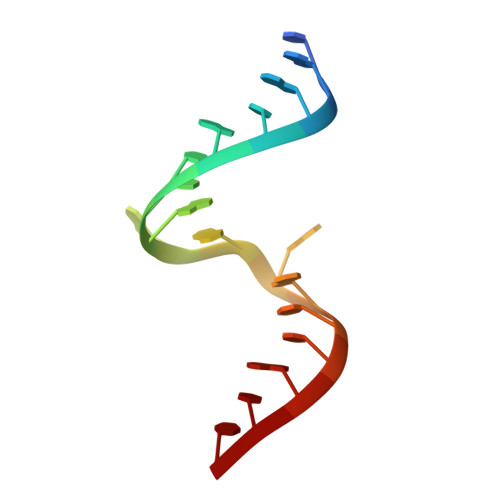Apramycin recognition by the human ribosomal decoding site.
Hermann, T., Tereshko, V., Skripkin, E., Patel, D.J.(2007) Blood Cells Mol Dis 38: 193-198
- PubMed: 17258916
- DOI: https://doi.org/10.1016/j.bcmd.2006.11.006
- Primary Citation of Related Structures:
2OE5, 2OE6, 2OE8 - PubMed Abstract:
Aminoglycoside antibiotics bind specifically to the bacterial ribosomal decoding-site RNA and thereby interfere with fidelity but not efficiency of translation. Apramycin stands out among aminoglycosides for its mechanism of action which is based on blocking translocation and its ability to bind also to the eukaryotic decoding site despite differences in key residues required for apramycin recognition by the bacterial target. To elucidate molecular recognition of the eukaryotic decoding site by apramycin we have determined the crystal structure of an oligoribonucleotide containing the human sequence free and in complex with the antibiotic at 1.5 A resolution. The drug binds in the deep groove of the RNA which forms a continuously stacked helix comprising non-canonical C.A and G.A base pairs and a bulged-out adenine. The binding mode of apramycin at the human decoding-site RNA is distinct from aminoglycoside recognition of the bacterial target, suggesting a molecular basis for the actions of apramycin in eukaryotes and bacteria.
Organizational Affiliation:
Department of Chemistry and Biochemistry, University of California-San Diego, La Jolla, CA 92093, USA. [email protected]
















